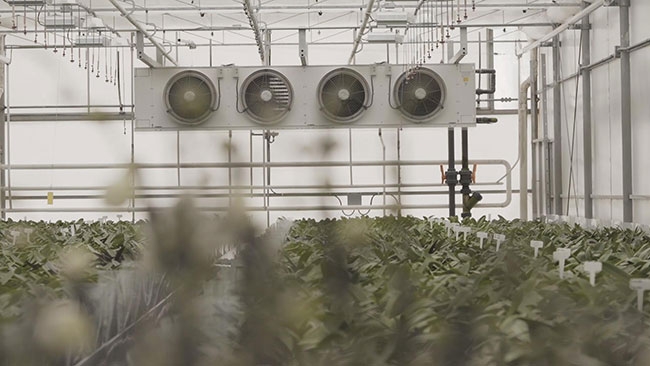
News
Energy savings beyond the boiler
Saving money: innovative ways to reduce greenhouse heating costs
June 1, 2017 By Jennifer Niece and James Williams
 Summer is the perfect time to make energy efficiency changes.
Summer is the perfect time to make energy efficiency changes. June 2017 – As a greenhouse operator, when you think of heating you likely think first of boilers, followed perhaps by the weather which feels out of your control. All growers know that careful climate control is critical to successful production, but the balance of heat gained versus heat lost is often not considered in detail.
By thinking beyond the boiler, you will consider how your greenhouse’s whole building system impacts your heating requirements and costs, and what you can do about it.
The main heating inputs for a greenhouse are sunlight, lighting and ballasts and boilers. Heat loss occurs through the exterior (conductive and radiative heat loss), infrared radiation (solar energy reflected from inside), evaporation of water, and ventilation – both passive (roof venting, air leakage) and active (exhaust fan). To actively control your heating costs, you must understand how these elements work together as a system. A heat balance study will provide a detailed breakdown of where energy is used, for what purpose, and how effectively it is retained. It will consider your acceptable thresholds for humidity and CO2 levels, and strategies you use to manage those conditions.
Ventilation is one of the most frequently overlooked elements of heat loss. Roof vents are often opened to balance humidity without recognizing this can also cause up to 40 per cent heat loss. Without a monitoring and alerts system, these vents often stay open longer or wider than needed for humidity purposes, making boilers work harder to maintain temperatures. Mechanical ventilation improves control of the rate and volume of air exchange, but still expels valuable heat. In the residential sector, heat recovery ventilators (HRVs) have been used for over 20 years, but they are not a common feature in North American greenhouses. HRVs recover and recirculate heat while still expelling humidity and oxygen. An effective HRV will reduce boiler size requirements, making it a common-sense investment when considering a new heating appliance.
Carbon pricing also influences greenhouse heating costs. It is now in place in several provinces, and proposed to be Canada-wide by 2018. Growers that rely on #2 fuel oil are particularly hard hit since carbon emissions from oil are approximately 45 per cent higher per gigajoule (GJ) than for natural gas. A careful manager will consider fuel required for heating versus for CO2, whether that fuel provides both benefits, and the cost-benefit compared to using purchased CO2.
Cogeneration is the last “outside the boiler” option we’ll discuss. Such systems produce electricity while capturing the heat and CO2 byproducts for greenhouse requirements. Cogeneration does require a sizeable capital investment; it makes the most sense for large growers with lighting systems (high electrical consumption) who can also export excess electricity to their local utility. Various jurisdictions offer grants that can reduce the payback to five years (down from a typical eight).
There are also effective boiler-focused ways to reduce your energy use and costs, many of which do not require new equipment. The first step every greenhouse should take is annual boiler maintenance. This ensures the boiler meets technical specifications for cleanliness, allowing it to operate at its most efficient.
Summer is the perfect time to make changes that will improve your cost-efficiency next winter. Get an early start while last winter’s heating costs are still top of mind, and ensure you don’t miss out next year.
Jennifer Niece and James Williams are with 360 Energy, one of North America’s leading energy services firms.
Print this page